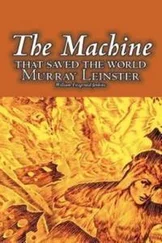1 ...6 7 8 10 11 12 ...16 Across the aeons of biological time since the first parrots appeared, the group has evolved into one of the world’s largest bird families. Of the 350 or so species of parrot known today, some are widespread, others confined to tiny areas. In either case, most species are found in the warm tropical latitudes. Some do, however, brave freezing temperatures in high mountains in the tropics, for example the high Andes, or extend into cooler temperate areas, such as New Zealand and southern South America. The Austral Conure ( Enicognathus ferrugineus ) for example toughs out a living in the raw cool climate of Tierra del Fuego, while the Antipodes Parakeet ( Cyanoramphus unicolor ) occupies the windswept outpost of Antipodes Island and neighbouring rugged islets in the Pacific well to the south of New Zealand. The Andean Parakeet ( Bolborhynchus orbygnesius ) has been recorded on the high montane grasslands at over 6,000 metres in the high Andes.
The majority of the world’s parrot species are found today in South America, Australia and New Guinea. The single country with most species is Brazil: over seventy different kinds are known from there. In mainland Asia from Indochina to Pakistan and in Africa there are remarkably few. This uneven distribution appears to be linked to the break-up of the ancient supercontinent of Gondwanaland. 8 Whether people have as yet documented the existence of all the living parrots is an open question. Three species of parrot new to science have been found since the late 1980s. 9 All are from South America and amazingly have waited until the Space Age to be noticed, let alone studied.
Though we still know little of these birds’ place in nature, parrots have become uniquely familiar to humans and have been closely associated with people for centuries. The oldest document in the literature of the Indian subcontinent is the Rigveda , or Veda of the Stanzas , of about 1,400 BC. This ancient work, written in Sanskrit, remarks on the great fidelity of parrots and records how in the mythology of that time they were symbols of the moon.
The Ancient Greeks were also well aware of parrots. The historian and physician Ctesias travelled widely in the East in around 400 BC. As well as holding the great distinction of producing the first published account of unicorns, he also brought news to Europe of curious human-like birds kept by the natives in the lands he visited. Aristotle wrote some 100 years later about a parrot, but he may not have seen it himself because he described it, presumably on the strength of its hooked bill, as a kind of hawk.
During his conquests of the fourth century BC the Macedonian general Alexander the Great marched through Afghanistan to the Indus valley in modern-day Pakistan. There his men acquired parrots that were later brought home with their other spoils of war. Alexander was probably the first person to bring live parrots to Europe. They were medium-sized green parakeets marked with black on the face and with maroon patches on the wings. They had long tails and a shrill cry. They are today known as Alexandrine Parakeets ( Psittacula eupatria ).
After Alexander’s conquests, the expansion of trade between the Greek city states and the Orient ensured that Europeans would soon become more familiar with parrots. In the second century BC the earliest known picture of a parrot was produced in a mosaic at the ancient Greek city of Pergamum.
The Greek historian Diodorus Siculus wrote in 50 BC about parrots he had seen in Syria. Since no parrot is native to that country today, they were most likely imported; probably from Africa. In AD 50 Pliny described parrots that he said were discovered by explorers sent to Egypt. Although these birds are not known to occur naturally in Egypt now, they might have been imported from the savannas beyond the desert, or it might have been that the desert was less extensive than it is today. Other accounts of the same birds gave their origin as India. Since there is only one parrot in the world that has a natural distribution that embraces both Africa and India it is very likely that these birds were Ring-necked Parakeets ( Psittacula krameri ). This species is one of the most widespread, adaptable and common parrots in the world today, and has a long history of living with people.
Ring-necked Parakeets were, for example, prized in Ancient Rome where they were kept as pets. So valuable did they become that they were often sold for more than the price of a human slave. Demand was intense, so a brisk trade built up with birds brought into Europe in large numbers. They were kept in ornate cages made from silver and decorated with ivory and tortoiseshell. Noblemen carried the birds through the streets of Rome as a colourful accessory. The statesman and philosopher Marcus Cato wrote, ‘Oh, wretched Rome! What times are these that women should feed dogs upon their laps and men should carry parrots on their hands.’ Some parrots, however, found a less fortunate fate in Rome. During the rule of Emperor Heliogabalus from 222 to 205 BC they became a table delicacy. Not only that but they were fed to his lions too, along with peacocks.
With the decline of Rome and its excesses, parrot keeping faded in Europe. A few Ring-necked Parakeets made it back with Crusaders and merchants during the Middle Ages and Marco Polo came across cockatoos in India, although they are not native to the Subcontinent and presumably had made their way there on the trade routes from further east. Today the most westerly distributed naturally occurring cockatoos are found in islands in the Moluccan Sea and in the Philippines. French sailors also found African Grey Parrots ( Psittacus erithacus ) in the Canary Islands. They had been imported there from West Africa. These parrots were found to be excellent talkers and by the middle of the fifteenth century a steady flow of birds to the islands had been established from Portuguese trading posts along the African coast.
Popular, colourful and in short supply, parrots once again became expensive status symbols. During the fifteenth and sixteenth centuries – the great age of exploration – the fact that parrots were fashionable, in big demand and valuable meant that sailors travelling to new lands in tropical latitudes were on the look-out for them.
When Columbus returned to Seville in 1493 from his first expedition to the Caribbean, the parrots he brought back were displayed at his ceremonial reception. He had obtained the birds from natives who had tamed them. A pair was presented to his royal patron, Queen Isabella of Castile. These parrots were probably the species of bird from the genus Amazona that remains native to Cuba and the Bahamas today, the Cuban Amazon or Cuban Parrot ( Amazona leucocephala ).
As the Conquistadors pressed their explorations throughout the islands and deeper into the mainlands of Central and South America, they found the practice of taming and keeping parrots was commonplace among the local populations. There is every reason to believe that the indigenous peoples of the tropics have kept parrots for thousands of years, and certainly for a lot longer than Europeans, a practice that many tribal societies continue to this day. Forest dwelling peoples with an intimate knowledge of their surroundings took the colourful birds to the heart of their culture where they became prized and revered possessions. Small-scale collecting by indigenous people for local trade was, however, very different from the approach of the Europeans. The foreigners had wholeheartedly embarked on their globalisation adventure and wanted volume supplies for the mass markets back home.
The parrots and the forest people were to have a lot in common. One was to face biological oblivion, the other cultural genocide. There is a story from 1509 in which the tame parrots belonging to local villages raised the alarm about an impending attack. Perched in the trees and on huts around a village, the birds screamed and shouted at the approach of Spanish soldiers, thereby enabling the local population to escape from their assailants into the forest. But the alliance of birds and ‘Stone Age’ humans was no match for muskets and axes. They did not resist the might of the colonial powers for long. The birds and the forests were soon victims of an unprecedented age of plunder.
Читать дальше












